Water Leaks, Polybutylene Pipes, and Mold – What to Do
Photo courtesy of Grotuk via Creative Commons
Today’s regularly scheduled post has been interrupted by a leak in our laundry room.
I hope my misfortune is your gain. These are the things I’ve learned about burst pipes, polybutylene pipes and mold. If you are a homeowner, soon-to-be a homeowner or even if you rent, this post is for you!
It all started when Pretty Handsome Guy and the boys came home from the beach. Shortly after they got back the mudroom began to faintly smell like a men’s gym locker room. But, I shrugged it off. Even little boy’s feet are funky. The next day it was worse, but I just ignored it and added “Buy Kids New Sneakers” to my to do list.
By Tuesday the stench had continued and after everyone left for school and work, I began my job as CSS (Chief Sneaker Sniffer.) I found the offending pair, or so I thought and threw them in the garage. But, several hours later the stench continued. When I went to do laundry, I thought I heard water running in the house (never a good sign in an empty house.) As I pressed my ear to the wall, sure enough I could hear water running, dripping, spraying or something like that in the wall. Total panic and disbelief set in. NO! It couldn’t be. We had just had a leak in the laundry room several months early. Luckily it was on an exterior wall and a patch and some new drywall fixed the problem.) My eyes sank to the floor where I saw the undeniable glistening of water along the baseboard.
How to Shut Off Your Home’s Water:
I ran to shut off the water in the house. Do you have a whole house shut off to your home? We do now because I had one installed. I can’t stress how important it is that you know where your home water shut off is! Usually it is in a closet or the pantry of your home. And it looks like this:
If you don’t have one inside your home, your’s may be under the house (which is a stupid place to install one if you ask me.) It is actually easier to shut off your water from the meter if there isn’t one in the house. Do you know where your meter is? This is what it looks like and it is usually at the corner of your lot.
You can remove the cover by simply sticking a screwdriver in the hole in the cover and lift up.
Plumbing supply shops sell a special tool for shutting them off. You simply set the key over the valve on the meter and turn it 180 degrees.
If you don’t own a water meter key, you can turn it off with an adjustable wrench and a screwdriver like this:
Now that you know how to shut off your water, it is good practice to shut off the water if you go away for several days. A water leak can ruin your home…trust me on this.
Now What?
And this is where any normal homeowner would call a plumber. But, I hesitated. I mean, I’m Pretty Handy Girl, right?! I even have a whole section of tutorials under Don’t Hire a Plumber!
But, I was also in the middle of the bonus room renovation. And frankly, I was concerned because this leak was between the laundry room and our kitchen which had two walls of cabinets that back up to the now water logged wall. My doubts continued, and I texted my fellow DIYer Sawdust and Paper Scraps to help me deal with my guilt.
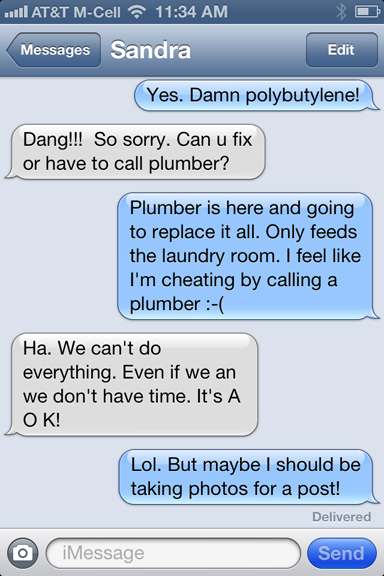
And so…this is what I did:
The Word Every Plumber Loves: Polybutylene
Yup, Pretty Handy Girl hired a plumber. What ultimately tipped the scales? Well, I knew that the pipes in our laundry room wall looked like this:
Those my friend are polybutylene pipes. {cue the PSYCHO music} If you are a potential new homeowner, this is one of the last words you want to hear from your home inspector. Polybutylene pipes were manufactured from 1978 – 1995. They were installed in almost 10 million homes at a substantial savings over the conventional copper plumbing pipes. Within 10 years or less, homeowners started witnessing leaking or burst pipes and sometimes catastrophic damage from them.
 Polybutylene pipes are often gray, and this one is labelled with a PB for polybutylene.
Polybutylene pipes are often gray, and this one is labelled with a PB for polybutylene.
It turns out that polybutylene can break down if you have chlorine in your water (which is used in many water treatment centers to kill harmful bacteria.) Can you guess why plumbers love polybutylene pipes? Yup, job security!
In 1995 there were several class action suits against the manufacturers of polybutylene pipes (Dupont, Qest, Vanguard, and Shell.) To my knowledge (and limited research online) all the class action suits have since been closed, the last claims were to be filed by 2008.
I had our plumber replace all the polybutylene pipes in our house, which were luckily limited to the laundry room addition. He finished replacing all the polybutylene with PEX pipe. Then he handed me a bill and walked out the door leaving gaping holes in our walls.
Honestly, this is what you want your plumber to do. Your walls will need to dry out completely before patching the drywall. I aimed a fan at the holes for 3 days.
This is where I had hoped the story would end, but sadly that is not the case.
The Smell that Wouldn’t Go Away!
Yesterday morning as I shooed the kids out the door for school I sniffed the air and thought to myself, “No, it couldn’t be.” But, in fact it was true. An hour later, the smell of mold was undeniable.
I cut another hole in the drywall. (It’s true. I really wanted to test the Dremel Multi-max using the drywall saw attachment.)
The drywall was slightly damp, but not too bad. I aimed the fan in the wall cavity and went back to work. A very short time later as I was refilling my coffee mug in the kitchen, the smell of mold was intensified. I opened the base cabinet doors to look for mold inside. There were no visible signs, but the smell was definitely stronger.
So, I did what any handy gal would do. I strapped on my knee pads grabbed a flashlight and descended into the bowels of our house: the crawlspace. Everything looked okay until I yanked down the stuff that reminds the kids of pink cotton candy. Beneath the insulation, on the underside of the subfloor, was the undeniable sight of dark moist plywood. And, on the edges—you guessed it—MOLD!
Who Ya’ Gonna Call?
At this point, I knew that we needed to call our home insurance company. And get a company in to give that mold a fatal smack down.I couldn’t easily access or physically see under the kitchen cabinets and I didn’t have one of these cool gadgets.
The moisture detector picked up high levels around the base of our kitchen cabinet. And so my good friends, I sit here and wait for the mold remediation team to pull my ENTIRE kitchen apart. Our house will soon look like the plastic draped home in E.T. I am just praying that the kitchen cabinets are okay or my upcoming kitchen project may get a LOT bigger.
What To Do If you Have a Water Leak, Polybutylene Pipes and/or Mold:
- DO NOT EVER ignore the tell tale signs of a water leak:
- Smell – Wet stinky men’s gym sock smell, moldy or musty smells
- Sight – Floor tile or boards that are popping up or warping. Wet carpet spot or glistening steam of water along a baseboard. Popped, bubbled or wrinkled paint. Warped baseboards or baseboards that are separated from the drywall. Dark wet stains or mold spots on wall. Ceiling bulge, falling plaster or popcorn ceilings.
- Sound – A ticking sound like a clock or water driplets. Water spraying or water running sound.
- Feel – Cold damp walls, squishy or soft drywall. Wet or damp rugs or floor. Springy floor boards.
- Investigate any tell tale signs of water leaking until you find the source. The sooner you catch a leak the better.
- Call a trusted plumber. (Talk to your friends or neighbors and get referrals for a good electrician, plumber, roofer and any other service professionals that you might need in an emergency.)
- If the walls are wet and no mold has formed, air it out. Run a fan on the damp area until it is dry.
- If mold is present, DO NOT USE A FAN!!! This can only blow the mold spores around your home. Call a professional immediately.
- Consider filing a home insurance claim, especially if you think your repairs may exceed your deductible. The insurance company will refer you to companies that specialize in disaster restoration and mold remediation.
What Every Homeowner Should Know (A Quiz for You):
- Do you have polybutylene pipes? If the answer is yes, you will most likely have them fail without warning. Get estimates from several plumbers to have them replaced. If you are considering buying a home that has polybutylene pipes ask the sellers to lower the price to reflect the cost you will have to pay to replace them.
- Does your home have a whole house water shut off valve? If so, where is it and how does it work?
- If your home doesn’t have an interior shut off valve, do you know where the water shut off is and/or the water shut off near the street?
- Do you have the tools to shut off the water from the meter? Either a water shut off key or a screwdriver and adjustable wrench will work.
- Have a plumber’s number on hand in case of an emergency. Does this plumber offer 24 hour service? And are they licensed and insured?
Extra Credit:
- Turn off your water if your house will be vacant for several days.
- Put a pan under your washing machine if you don’t have a drain in the laundry room floor.
- Check the supply lines under the sinks, behind the toilet and in the laundry room to make sure they are on tight and are not dripping or showing signs of wear and tear. Consider replacing ALL your interior water supply lines with braided metal ones. These are less likely to burst.
- Wish me luck as I get through the next few days(…to be continued.)
I hope you never need the information I just gave you. May your house always be dry!
You can read more about our kitchen disaster and renovation in these updates:
- My World Upended, Asbestos Discovery and Removal -All You Ever Wanted to Know About Asbestos
- Planning New Kitchen Layout and more
- Planning Colors and Materials for the New Kitchen
- Let the Demolition Begin
- How to Remove Soffits
- Move Back in the Kitchen Temporarily and Throw a New Year’s Party
- Termite Damage and Kitchen Update
- How and When You Should File for a Permit during a Kitchen Renovation – Your Questions Answered
- Everything You Should Know about Termites and Termite Damage
- Structural Engineer Plans and another Kitchen Update
- How to Survive without a Kitchen During Renovation



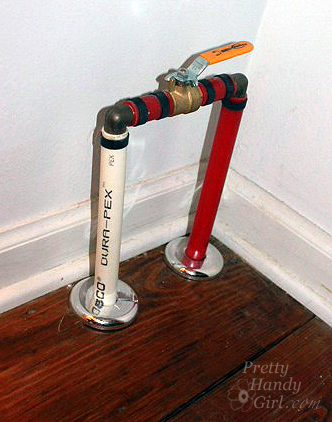
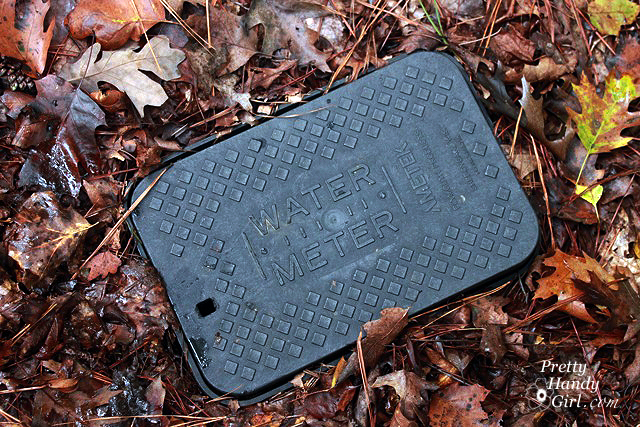
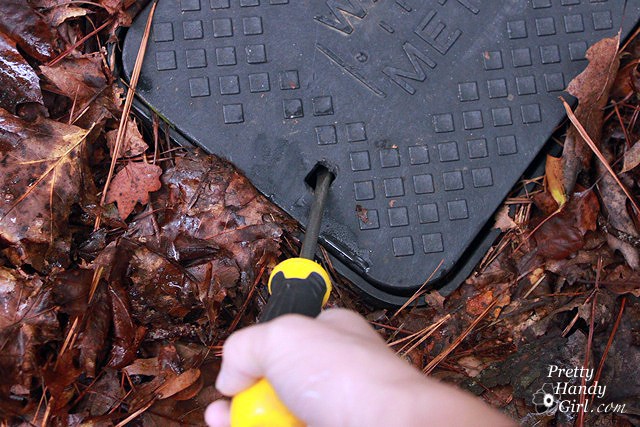
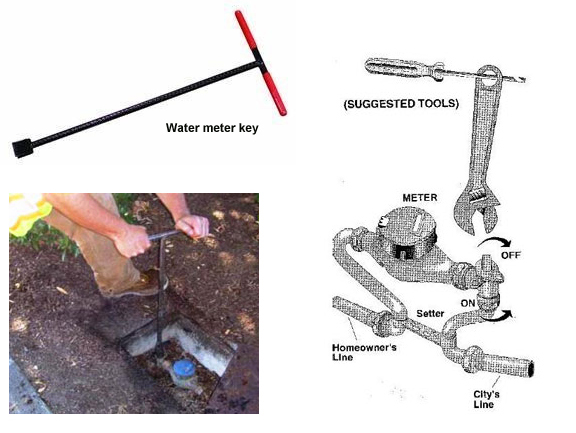
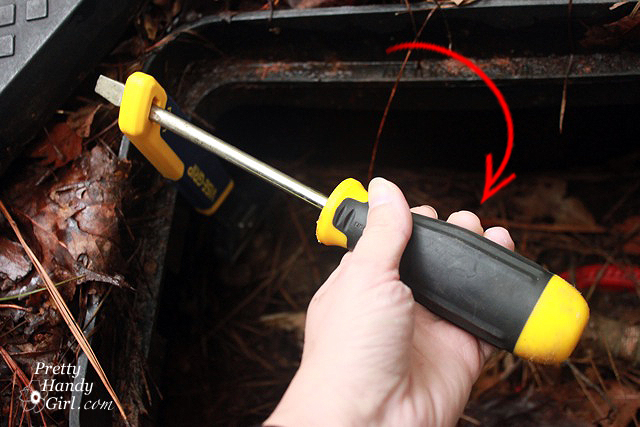
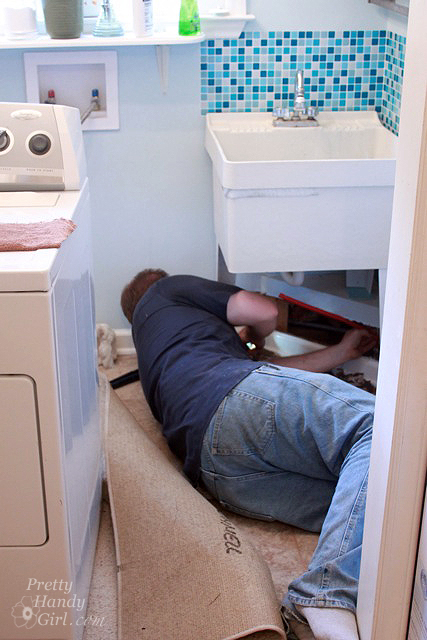
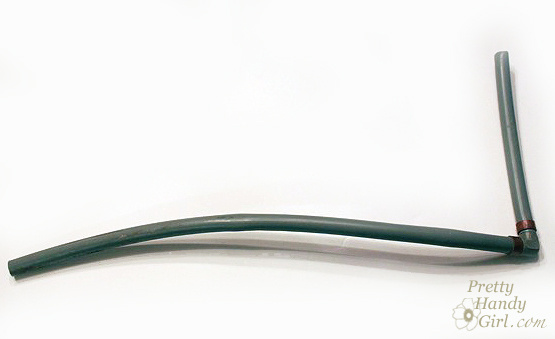


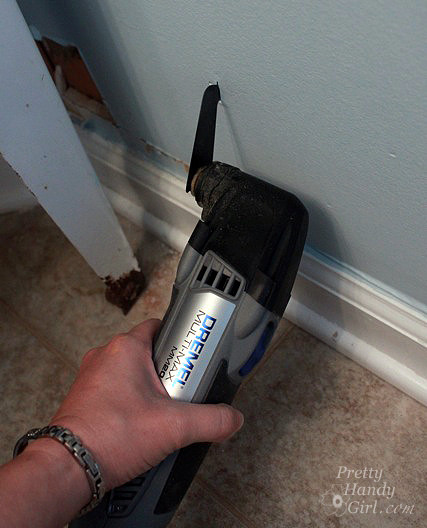


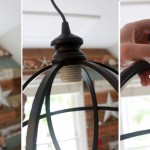

I appreciated the water leak info & the whole house shut-off valve info as well. Thank you